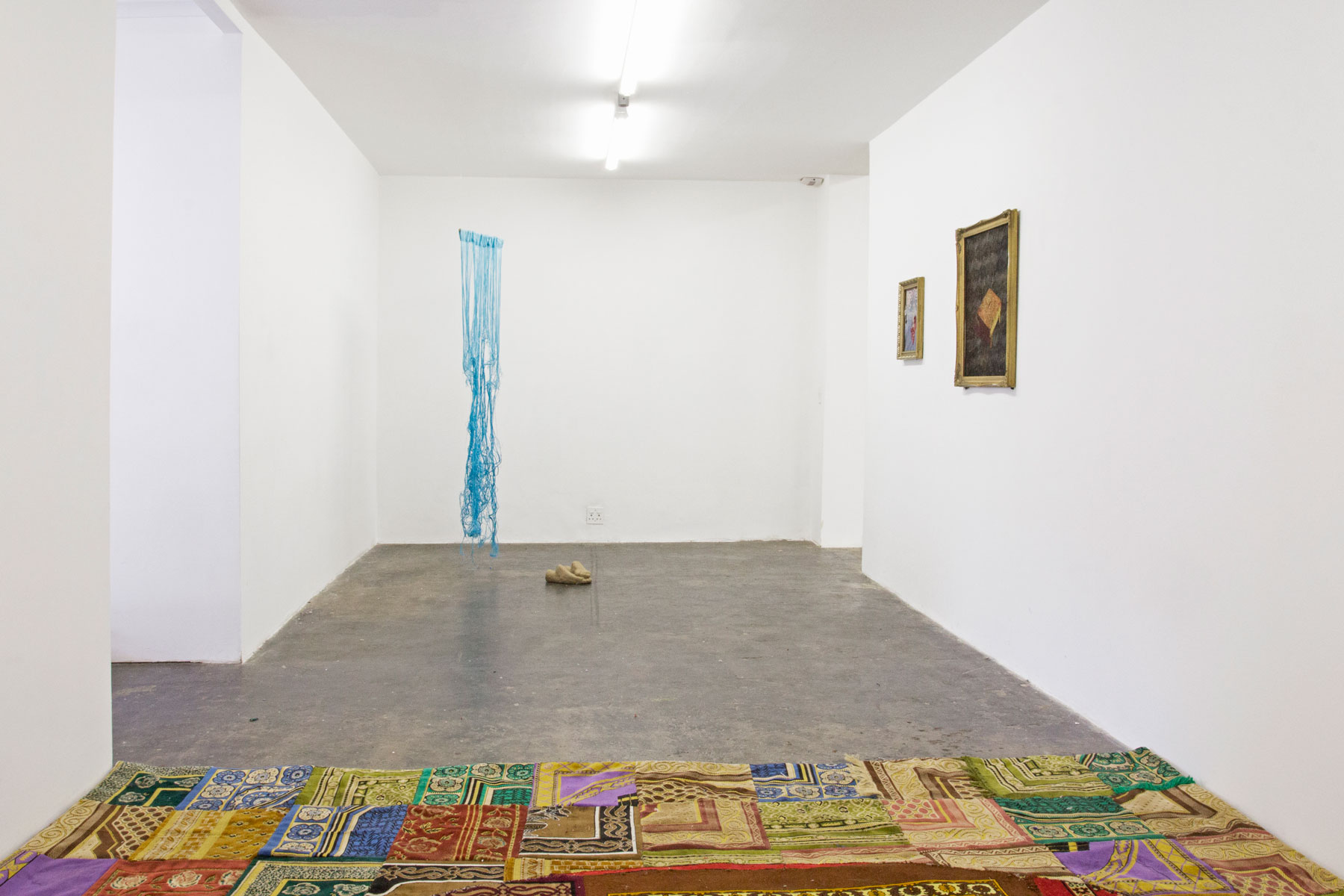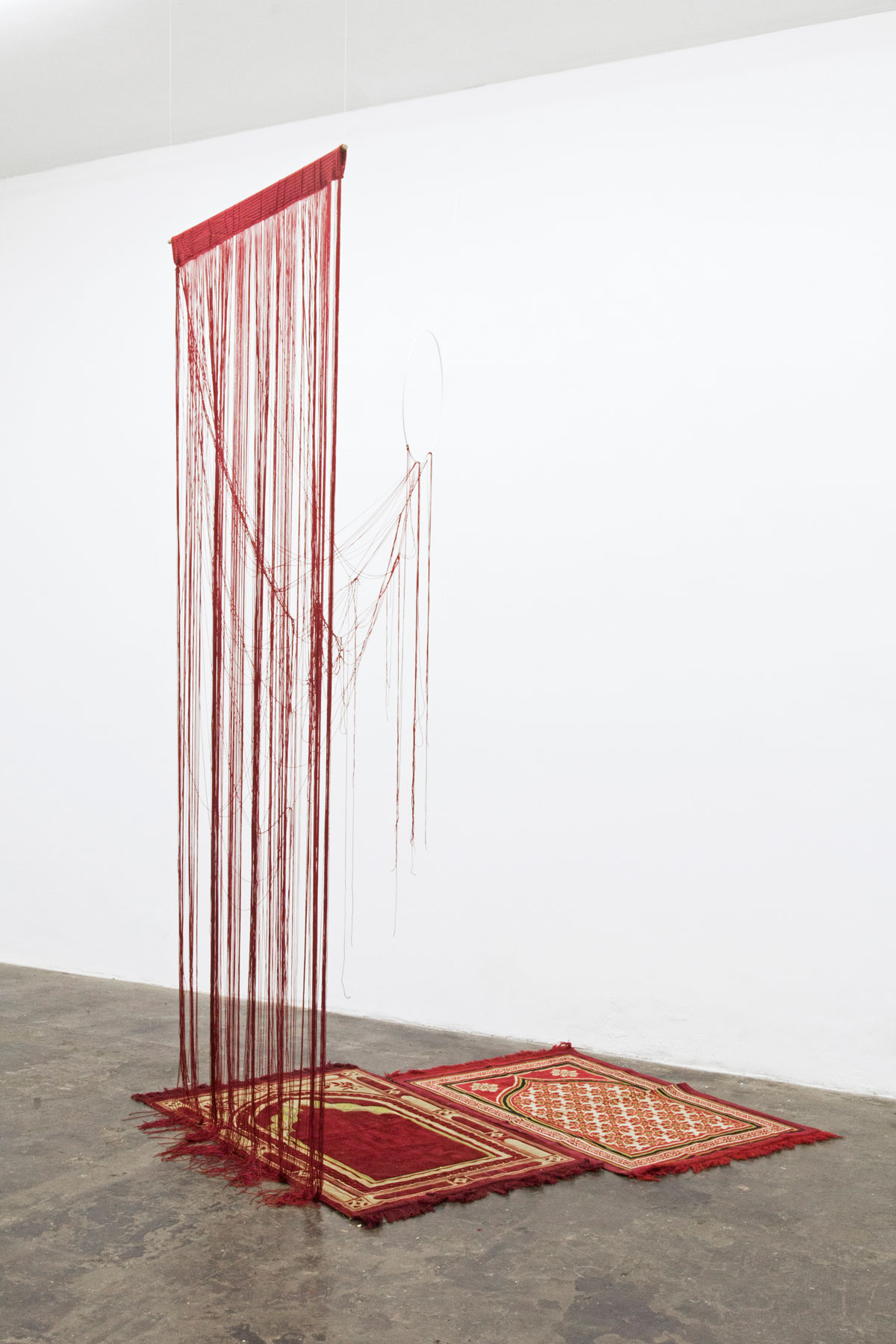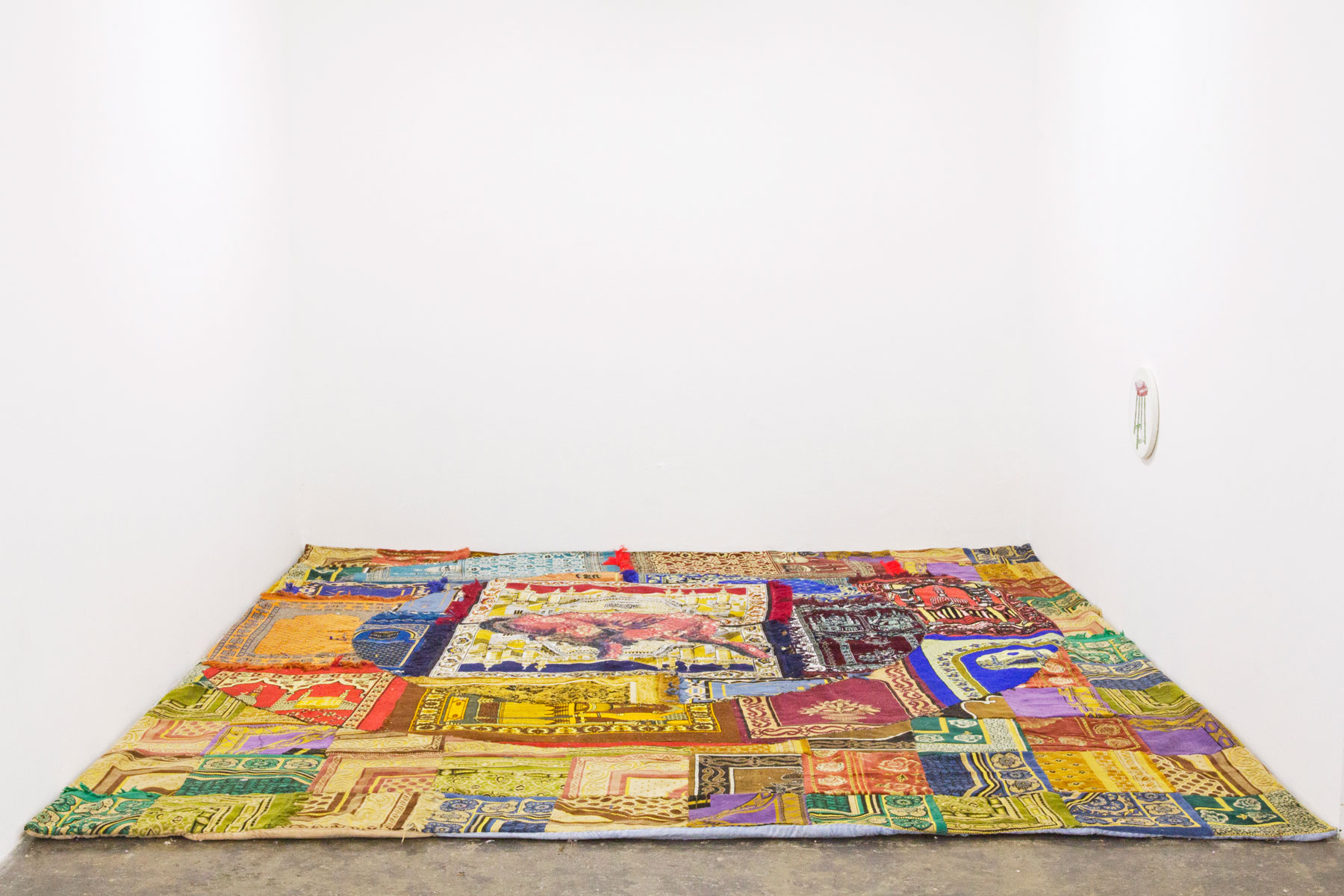


















The title of the exhibition references fabled sayings by Mullah Nasiruddin, the 13th century Seljuq satirical Sufi who is often referred to as ‘the
wise fool’. Adams identifies with the populist philosopher’s often humorous searches for God in domestic and other commonplace objects.
The exhibition features installation works and embroideries. The latter represents furniture pieces based on particular objects of personal, family and religious significance. Adams renders the objects incomplete, or with structural weaknesses counter to their quotidian functionality. The array of predominantly textile-based installations allude to disturbances within the comforts of home: explicating what happens when home becomes a place of danger.
The personal narrative that runs through the work culminates in If that I knew, the largest installation in the exhibition. The focal point of this work is a carpet of prayer mats representing a prone dog juxtaposed with the patterns and architectural elements inherent in the design of the carpets. Adams explains: “In Islam the dog is considered an impure animal. Superimposing the image of the dog on the Holy City is an act of claiming a stake despite rejection and ridicule. All the works in this body are conversations: between God and myself, moments and experiences. These conversations are often argumentative, conflictual, yet, intimate and at times reassuring.”
The exhibition features installation works and embroideries. The latter represents furniture pieces based on particular objects of personal, family and religious significance. Adams renders the objects incomplete, or with structural weaknesses counter to their quotidian functionality. The array of predominantly textile-based installations allude to disturbances within the comforts of home: explicating what happens when home becomes a place of danger.
The personal narrative that runs through the work culminates in If that I knew, the largest installation in the exhibition. The focal point of this work is a carpet of prayer mats representing a prone dog juxtaposed with the patterns and architectural elements inherent in the design of the carpets. Adams explains: “In Islam the dog is considered an impure animal. Superimposing the image of the dog on the Holy City is an act of claiming a stake despite rejection and ridicule. All the works in this body are conversations: between God and myself, moments and experiences. These conversations are often argumentative, conflictual, yet, intimate and at times reassuring.”